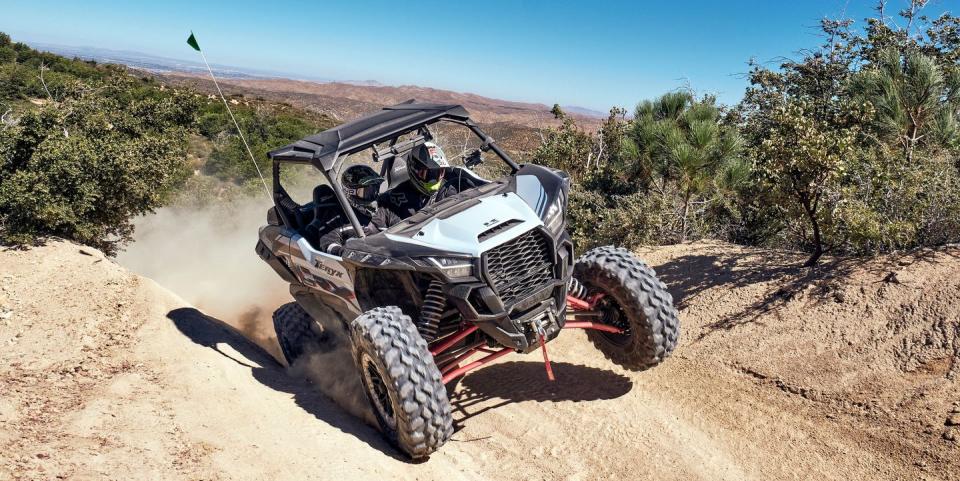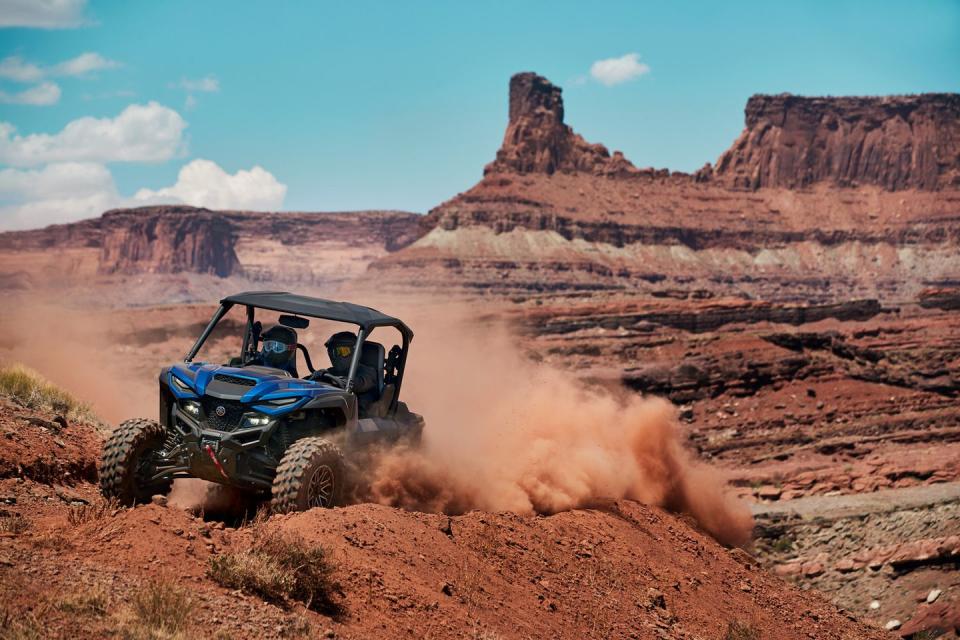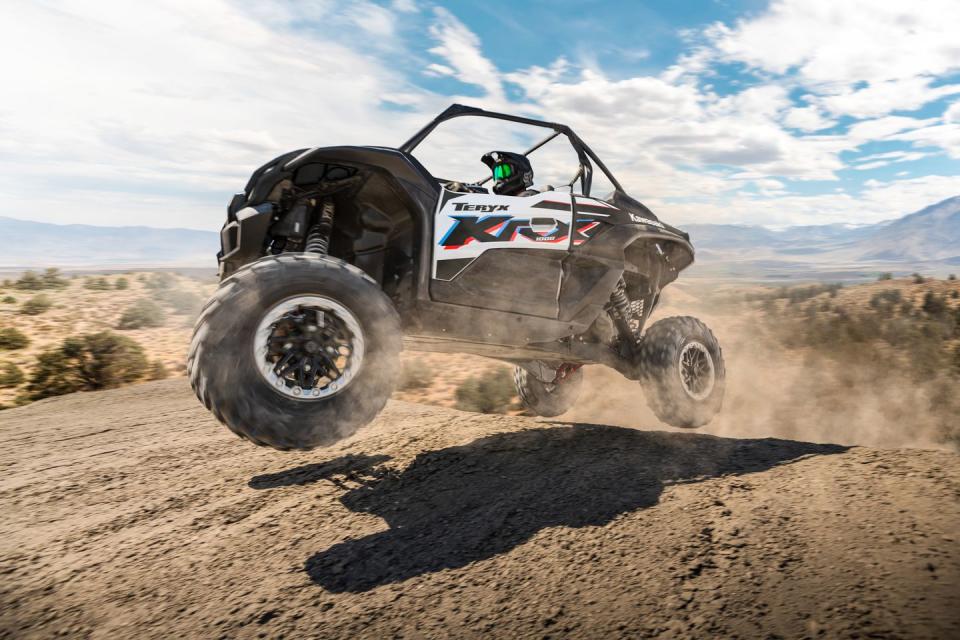Side-By-Sides Are Neck-and-Neck with Motorcycles When It Comes to Fun

The first side-by-sides were sold by Polaris and Kawasaki in 1988
Side-by-sides became popular in the mid-2000's
A Teryx KXR 1000 is a sport version side-by-side and handles most any terrain
The side-by-side phenomenon probably started when two guys who worked in maintenance at some golf course decided to race. Golf course maintenance guys, ranch hands, landscapers, all got access to the first miniaturized flatbed micro-haulers that would blossom into what we now see as performance side-by-sides.
Let us turn back the off-road tires of time.
In the beginning, Polaris built the Ranger and Kawasaki the Mule. Both were released in 1988 to make yard work easier for cowboys. M-U-L-E was actually an acronym that stood for Multi-Use Light Equipment, words which could mean anything but which aptly described Kawasaki’s versatile little sputtering pickuplet. The Ranger, meanwhile, sported six-wheel drive, which promised as much fun as a Tyrrell P34 car of Formula-1 fame, except off-road. Both were instantly popular among farmers, gardeners, foresters, nursery managers, surveyors and all kinds of people who had to carry things and get places, often in the dirt but usually not very fast.
The class of vehicle in which these contraptions evolved was called the Utility Terrain Vehicle or UTV. They were different from All Terrain Vehicles, or ATVs, in that you sat in a UTV, while you sat on an ATV. The UTV also allowed you to haul tools, bags of fertilizer and the occasional large item of roadkill. You could squeeze through much smaller spaces in a UTV than you could in a Jeep, too, and you could get over almost as much rugged terrain. Of course, you can’t take a UTV on a public roadway, at least not legally.

At some point, let’s say it was 2004 with the introduction of the Yamaha Rhino, or 2006’s Arctic Cat, or maybe the Polaris RZR in 2007, or maybe even the Honda Big Red in 2008, anyway at some point these things went from existing for a single, working purpose to being made for pure fun and recreation.
“Side-by-sides evolved from ATVs, they were more approachable because they had steering wheels and pedals (instead of handlebars and pegs),” said Honda Powersport’s Ben Hoang. “They added utility and versatility with cargo or dump beds. The capability increased with larger wheels/tires, longer wheelbases and increased ground clearance. Safety was a big factor and these offer occupant protection structures (what non-lawyers would call roll cages, Ed.), seatbelts, door nets and interior grab handles. There is more of a social aspect, too, with side-by-side seating and additional passenger comfort features. That all gets us where we are today with a broad range of work and play machines with everything in between.”

So when Kawasaki called and offered a day’s off-roading in its new Teryx KRX 1000, I said “Sure!”
The Teryx KXR 1000 is the sport version of a side-by-side, or SxS, from Kawasaki. There is also the plain old Teryx, a $13,999 two-seater with an abbreviated truck bed on the back, and the $15,999 Teryx4 which, obviously, seats four. The utilitarian Mule still sits in the lineup, too, starting as low as $6,799.
“This is our first true venture in the sport side-by-side segment,” said Ken Essex, Kawasaki SxS brand experience manager. “We've had recreational side-by-sides for a while. This is our true sport-oriented machine.”
Kawasaki introduced the model last year and I would be driving the new Trail Edition, which is being introduced this year. It’s powered by a 999-cc four-stroke dohc parallel twin mounted behind its two passenger seats. Kawasaki doesn’t list horsepower but it does list - very specifically - the amount of torque, which is 76.7 lb ft at 7000 rpm. [It means we know that it makes 102 horsepower at 7,000 rpm, at least - ED]

 Yahoo Autos
Yahoo Autos 